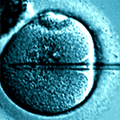Citation: Amparo Pascual-Ahuir, Markus Proft. 2020: The mission of AIMS Bioengineering, an open-access forum to bring together Biological and Engineering Sciences, AIMS Bioengineering, 7(1): 60-61. doi: 10.3934/bioeng.2020006
Related Papers:
| [1] |
Almudena Espín-Pérez, Selen Bozkurt, Hong Zheng, Aleksandra Nivina .
Artificial intelligence and data science applied to bioengineering. AIMS Bioengineering, 2021, 8(1): 93-94.
doi: 10.3934/bioeng.2021009
|
| [2] |
Daniele D’Arrigo, Marta Bottagisio, Silvia Lopa, Matteo Moretti, Arianna B. Lovati .
Tissue engineering approaches to develop decellularized tendon matrices functionalized with progenitor cells cultured under undifferentiated and tenogenic conditions. AIMS Bioengineering, 2017, 4(4): 431-445.
doi: 10.3934/bioeng.2017.4.431
|
| [3] |
Induni N. Weerarathna, Anurag Luharia .
Exploring the nexus of biomedical science and robots for enhanced clinical outcomes—a literature review. AIMS Bioengineering, 2024, 11(1): 1-17.
doi: 10.3934/bioeng.2024001
|
| [4] |
Kristen K. Comfort .
The rise of nanotoxicology: A successful collaboration between engineering and biology. AIMS Bioengineering, 2016, 3(3): 230-244.
doi: 10.3934/bioeng.2016.3.230
|
| [5] |
Mario Jolicoeur .
Modeling cell behavior: moving beyond intuition. AIMS Bioengineering, 2014, 1(1): 1-12.
doi: 10.3934/bioeng.2014.1.1
|
| [6] |
Tanishka Taori, Anjali Borle, Shefali Maheshwari, Amit Reche .
An insight into the biomaterials used in craniofacial tissue engineering inclusive of regenerative dentistry. AIMS Bioengineering, 2023, 10(2): 153-174.
doi: 10.3934/bioeng.2023011
|
| [7] |
Pawel Jajesniak, Tuck Seng Wong .
From genetic circuits to industrial-scale biomanufacturing: bacterial promoters as a cornerstone of biotechnology. AIMS Bioengineering, 2015, 2(3): 277-296.
doi: 10.3934/bioeng.2015.3.277
|
| [8] |
Rafael Pinheiro Amantéa, Robspierre de Carvalho, Luiz Otávio Barbosa .
Evaluation of a radial basis function node refinement algorithm applied to bioheat transfer modeling. AIMS Bioengineering, 2021, 8(1): 36-51.
doi: 10.3934/bioeng.2021005
|
| [9] |
Maria Waqas, Urooj Ainuddin, Umar Iftikhar .
An analog electronic circuit model for cAMP-dependent pathway—towards creation of Silicon life. AIMS Bioengineering, 2022, 9(2): 145-162.
doi: 10.3934/bioeng.2022011
|
| [10] |
David K. Y. Lim, Peer M. Schenk .
Microalgae selection and improvement as oil crops: GM vs non-GM strain engineering. AIMS Bioengineering, 2017, 4(1): 151-161.
doi: 10.3934/bioeng.2017.1.151
|
With great enthusiasm, we accepted the invitation to take part of the Editorial Board of the AIMS Bioengineering journal. We are motivated to place this Open Access journal into a position where it will contribute to filling the gap between fundamental disciplines of Biological Sciences and applied areas of Engineering Sciences. This is an ever-growing demand of our society, and we feel that AIMS Bioengineering should increasingly contribute to freely disseminate high-quality research, as well as stimulating revisions and comments at the boundary of Biology with Biomedicine, Material and Imaging Sciences, Bioremediation, Bioprocessing, Chemical Engineering among others. Recent technological advances will undoubtedly bring us exciting and essential accomplishments in many fields of Biological Engineering. Just think of CRISPR microbial genome editing in metabolite and biofuel production and environmental bioremediation, advanced drug targeting and delivery by nanotechnology, stem cell technology in tissue engineering and the creation of artificial organs, and many more. AIMS Bioengineering should be an attractive, non-profit publishing forum with the aim of rapid dissemination of all technically sound contributions to this expanding field of Biotechnology.
The young AIMS Bioengineering journal, launched in 2014 by AIMS press, offers an ideal platform to optimally distribute and showcase relevant research at the interface of Biotechnology and Engineering, as it is currently completely free of costs for both scientific authors and readers. We will continue to encourage the publication of all well-executed research, irrespectively of immediate impact. AIMS Bioengineering works under the premise that all manuscripts revised by peer review should be freely available to the scientific community, and that it is our readers, who will ultimately decide the impact of all contributions. The editorial board will do its best to boost the activity of the journal by special and thematic issues in selected fields of Biological Engineering and thus to establish AIMS Biotechnology as a reference journal in the field. We, the editorial board members and the managing personnel, truly hope that you join us to make AIMS Bioengineering a timely and lively forum for the free interchange of results and opinions in this exciting field of biological innovation.












 DownLoad:
DownLoad: